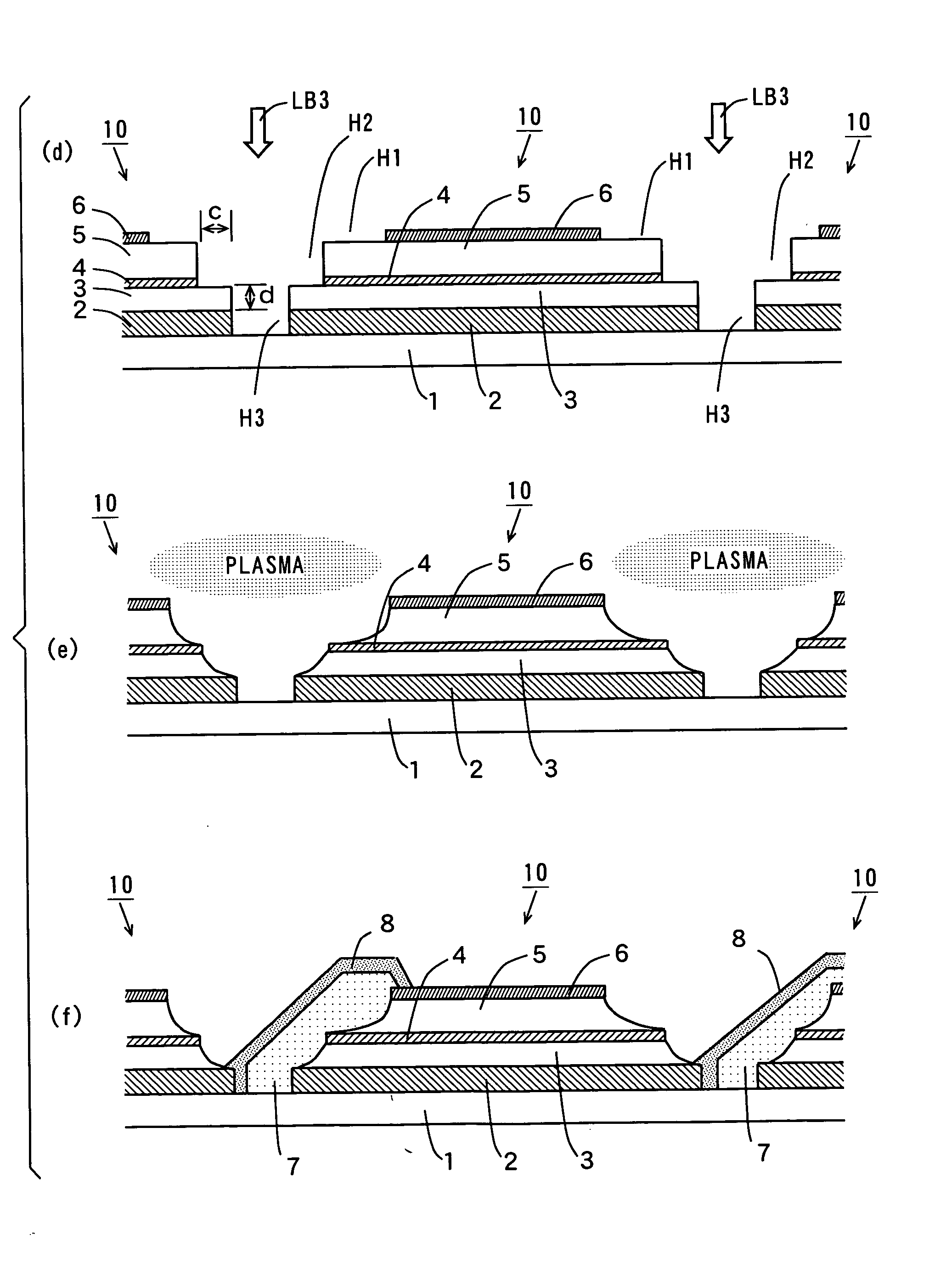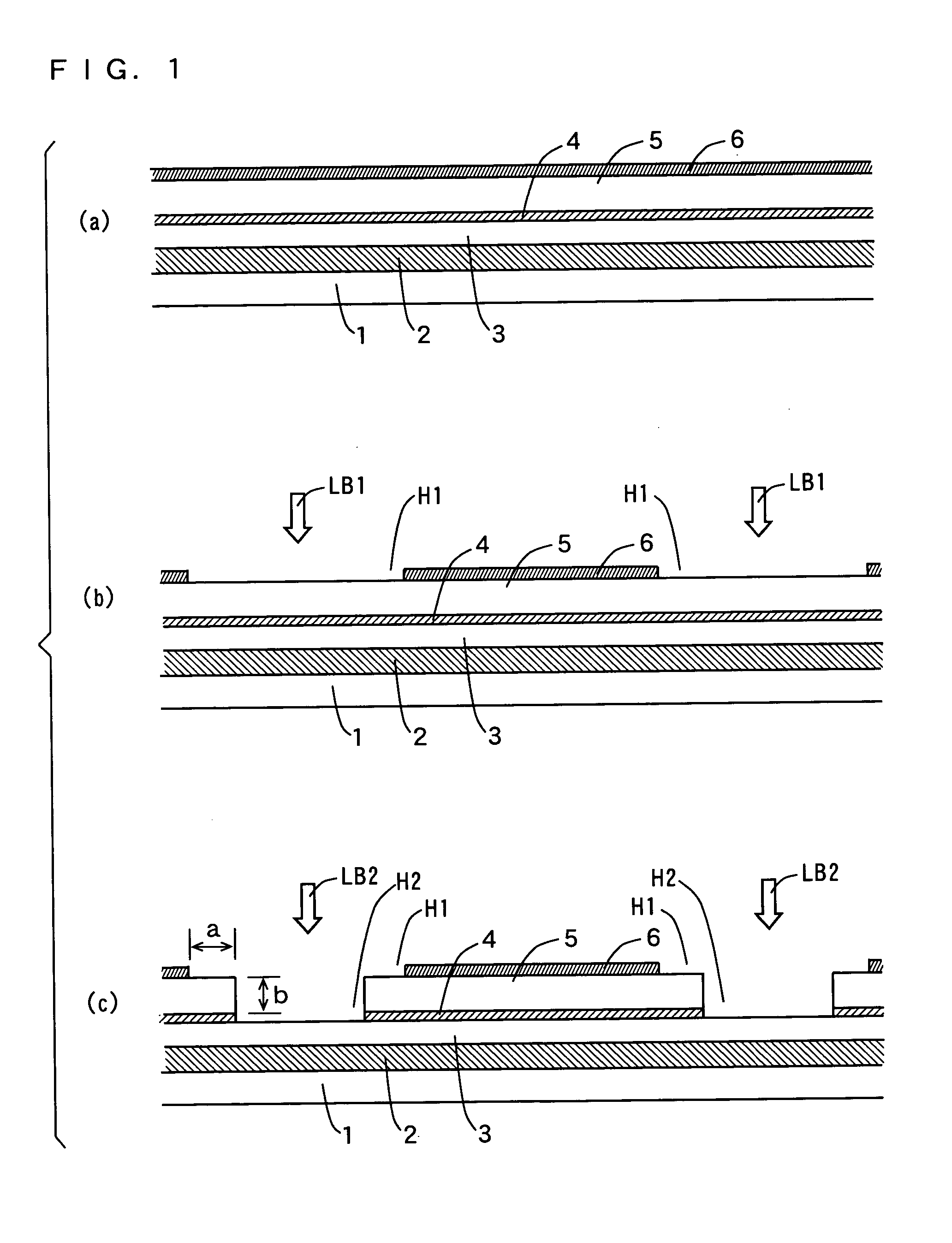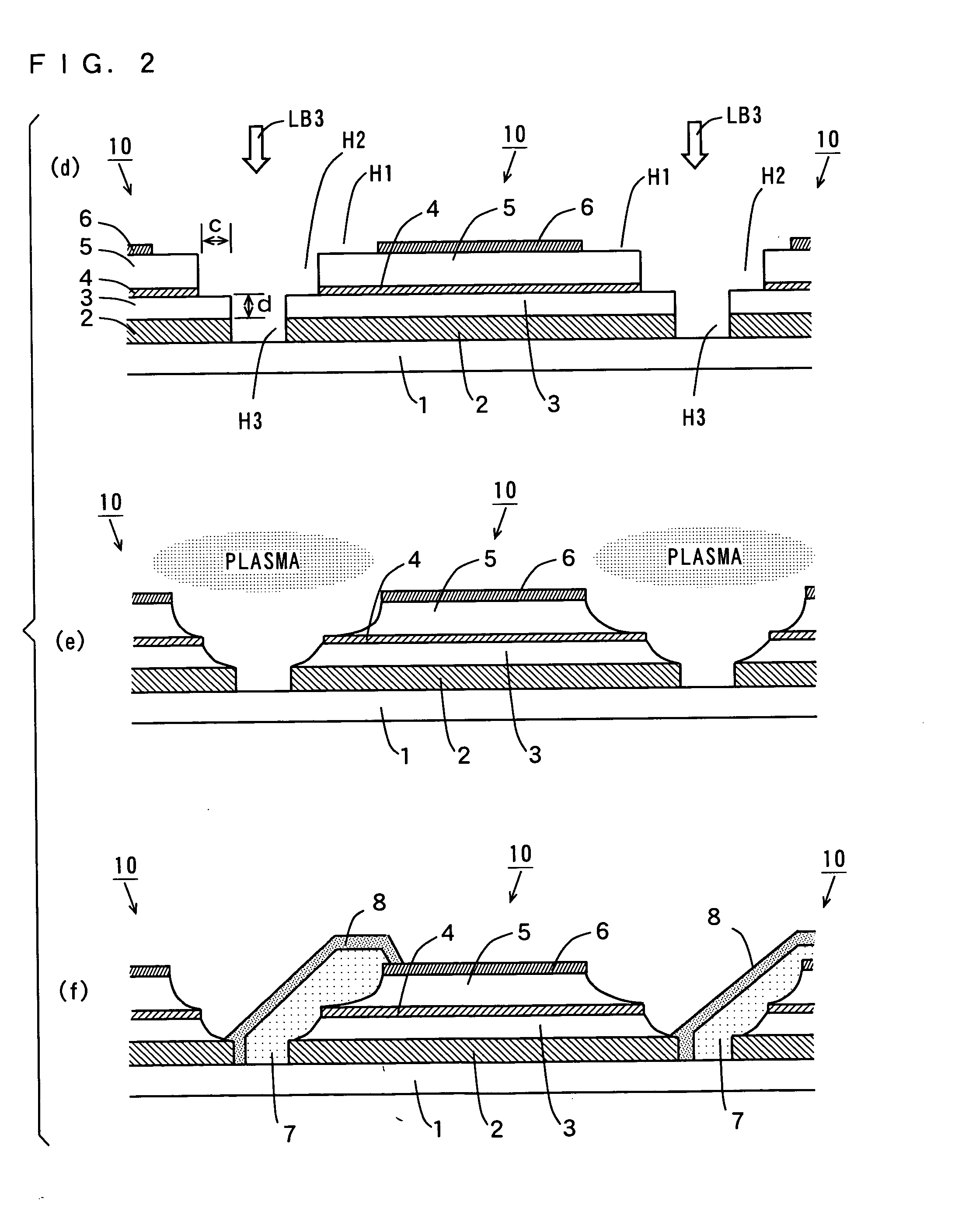Photovoltaic cell, photovoltaic cell module, method of fabricating photovoltaic cell and method of repairing photovoltaic cell
a photovoltaic cell and photovoltaic cell technology, applied in the field of photovoltaic cell, photovoltaic cell module, method of fabricating photovoltaic cell and method of repairing photovoltaic cell, can solve the problems of reverse bias repair, reverse bias repair is not applicable to and the short-circuited portion of the photovoltaic conversion module cannot be recovered with tandem photovoltaic conversion cells
- Summary
- Abstract
- Description
- Claims
- Application Information
AI Technical Summary
Benefits of technology
Problems solved by technology
Method used
Image
Examples
first embodiment
[0085] FIGS. 1(a ), 1(b ), 1(c ) and FIGS. 2(d), 2(e), 2(f) are schematic cross sections showing the steps of a method for fabricating a tandem photovoltaic cell module according to a first embodiment of the invention.
[0086] First, as shown in FIG. 1(a ), a light receptive electrode 2, a first photovoltaic conversion layer 3, an intermediate reflective layer 4, a second photovoltaic conversion layer 5, and a back electrode 6 are formed in order on a transparent substrate 1.
[0087] The transparent substrate 1 may be made of a glass plate, a transparent resin film, or other suitable materials. The light receptive electrode 2 is made of a transparent conductive oxide such as ITO (indium-tin oxide), for example. The first photovoltaic conversion layer 3 has a structure that includes, from the light receptive electrode 2 side, a p-type amorphous silicon layer, an i-type amorphous silicon layer, and an n-type amorphous silicon layer.
[0088] The intermediate reflective layer 4 is made of ...
second embodiment
[0107] FIGS. 6(a ), 6(b ), 6(c ) and FIGS. 7(d), 7(e), 7(f) are schematic cross sections showing the steps of a method for fabricating a tandem photovoltaic cell module according to a second embodiment of the invention.
[0108] First, as shown in FIG. 6(a ), a back electrode 22, a first photovoltaic conversion layer 23, an intermediate reflective layer 24, a second photovoltaic conversion layer 25, and a light receptive electrode 26 are formed in order on a substrate 21.
[0109] The substrate 21 may be made, for example, of a thin plate of stainless onto which PES (polyethersulfone), PI (polyimide), or the like is adhered. The back electrode 22 is made of a laminated film, for example, of a metal material such as silver, aluminum, titanium, and copper, and a metal oxide such as ZnO, ITO, and SnO2. The first photovoltaic conversion layer 23 has a structure that includes, from the back electrode 22 side, an n-type crystalline silicon layer, an i-type crystalline silicon layer, and a p-t...
examples
[0130] In Examples, photovoltaic cell modules were fabricated as follows according to the procedure shown in FIG. 6 and FIG. 7.
[0131] A 0.2-mm thin plate of stainless to which PES was adhered was used as a substrate 21. A laminated film of 200-nm silver and 100-nm ZnO was used as a back electrode 22. A 3-μm crystalline silicon layer that includes, from the substrate 21 side, an n-type microcrystalline silicon layer, an i-type microcrystalline silicon layer, and a p-type microcrystalline silicon layer was used as a first photovoltaic conversion layer 23. ZnO with a thickness of 40 nm was used as an intermediate reflective layer 24. A 300-nm amorphous silicon layer that includes, from the intermediate reflective layer 24 side, an n-type amorphous silicon layer, an i-type amorphous silicon layer, and a p-type amorphous silicon layer was used as a second photovoltaic conversion layer 25. ITO with a thickness of 75-nm was used as a light reflective electrode 26.
[0132] The third harmoni...
PUM
 Login to View More
Login to View More Abstract
Description
Claims
Application Information
 Login to View More
Login to View More - R&D
- Intellectual Property
- Life Sciences
- Materials
- Tech Scout
- Unparalleled Data Quality
- Higher Quality Content
- 60% Fewer Hallucinations
Browse by: Latest US Patents, China's latest patents, Technical Efficacy Thesaurus, Application Domain, Technology Topic, Popular Technical Reports.
© 2025 PatSnap. All rights reserved.Legal|Privacy policy|Modern Slavery Act Transparency Statement|Sitemap|About US| Contact US: help@patsnap.com



